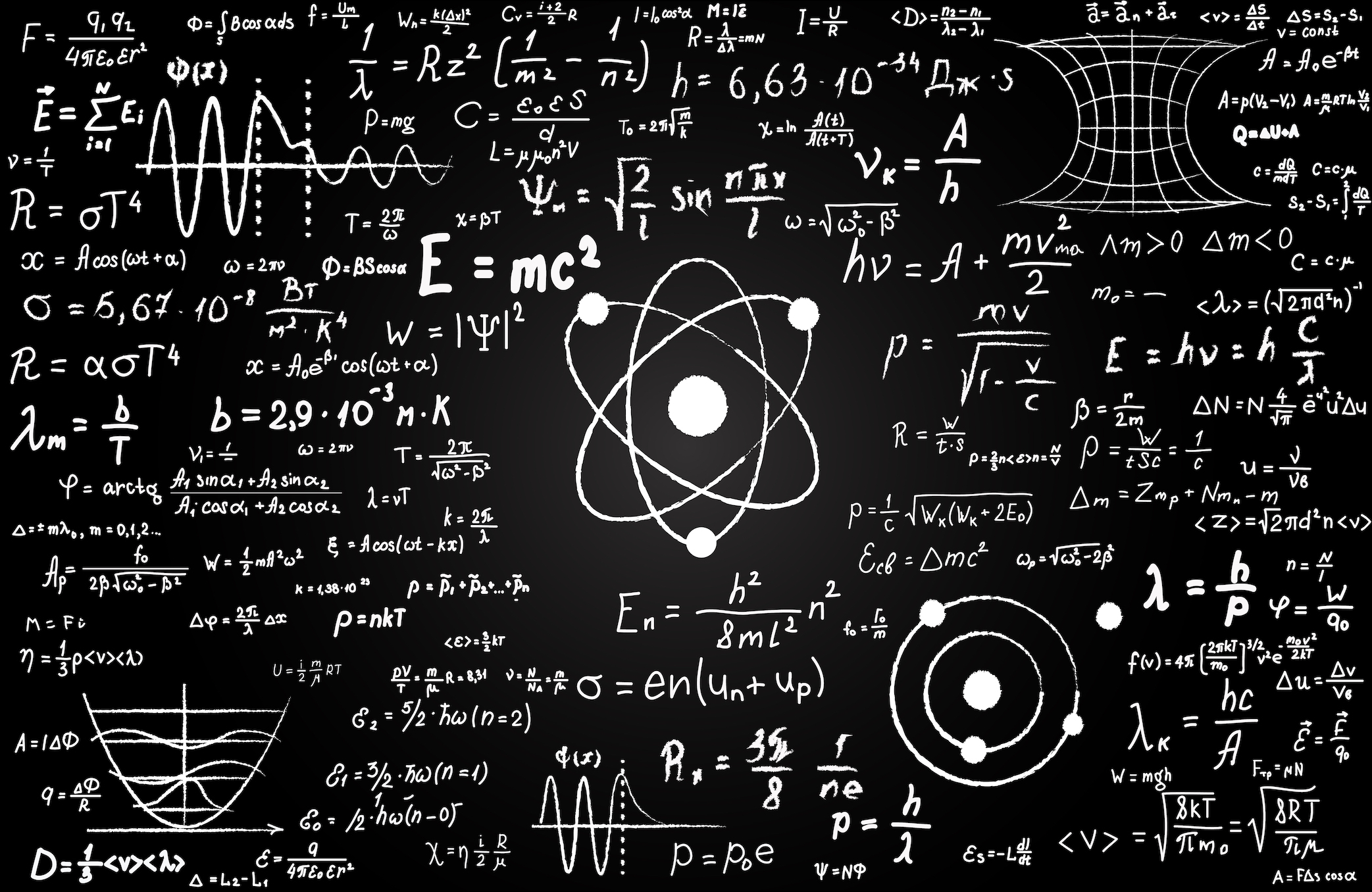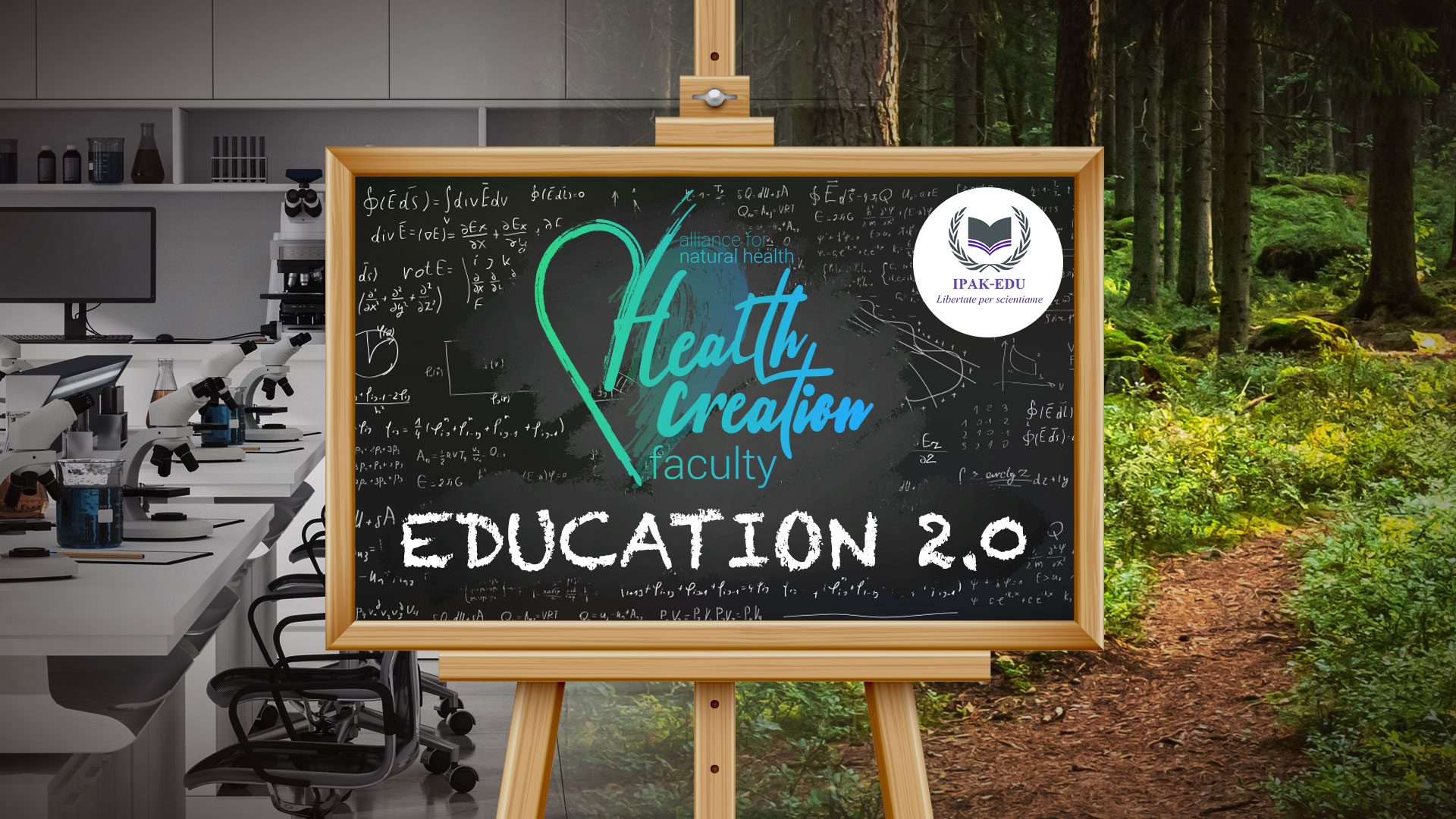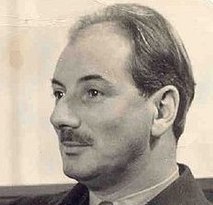Content Sections
- ● Why science can’t solve complex, biologically related problems
- ● The blinkered, outdated scientific model
- ● You assume what???!!!
- ● Reductionism and silos
- ● The corruption of an already faulty scientific model
- ● Why I left the scientific establishment
- ● Education 2.0
- ● A perfect union: ANH and IPAK
- ● Life Medicine: a new paradigm and language
By Rob Verkerk, Ph.D.
Executive & scientific director, Alliance for Natural Health (Intl1 and USA2)
1www.anhinternational.org
2www.anh-usa.org
This article has been co-published on the Popular Rationalism substack of James Lyons-Weiler PhD
“A day spent without the sight or sound of beauty, the contemplation of mystery, or the search of truth or perfection is a poverty-stricken day; and a succession of such days is fatal to human life.”- Lewis Mumford (1895 – 1990); sociologist, historian, philosopher
Why science can’t solve complex, biologically related problems
Despite incredible advances in science and technology that have delivered everything from space and deep-sea exploration, skyscrapers, and internal combustion engines, to computers, satellite communications, and organ transplants, progress in many areas that affect large numbers of lives has been very limited. Take for example social development, the prevention or treatment of chronic diseases, the human-induced destruction of the natural environment, or our political systems.
Even the technologies that are touted as massive successes have their downsides. Antibiotics and their rapidly emerging flipside, antimicrobial resistance, and covid-19 mRNA vaccines, and their failure to meet their promise of being safe, and effective in eliminating SARS-CoV-2, are two examples.
Fundamental to the many failures in human attempts to deal with complex problems are two commonalities. One is the over-reliance on a simplistic, unevolved version of the scientific method that attempts to objectify and reduce everything to its component parts, in the hope that when you put all the components together you better understand the whole. Once you understand the whole, or should I say, think you understand the whole, you get a reward. That’s the ability to control the system you think you understand, but usually don’t. A travesty of our time is that we place ourselves in positions of power and do not know what they don’t know. Or, at least, they pretend not to know.
This scientific method has become something we are being asked to follow with almost religious fervour. Quite literally, we are being asked to ‘follow the science’ rather than any religion, spiritual or other path. We should maintain unfathomable trust in science’s superpowers, powers that we mere mortals won’t and don’t need to understand. We need to just trust the scientists, as we heard at the recent Nobel Prize summit in Washington DC, held in May. Any other view will be held as scientific misinformation, and don’t worry, AI will be used to track it down and censor it out of existence.
The blinkered, outdated scientific model
The thing is, the mainstream scientific establishment, which has unquestionably become one the most dominant forces directing human society, has a problem. It operates on a limited and greatly outdated Newtonian-Cartesian view of the world. It may work just fine when you disorganise a machine, break it down into its component parts, evaluate and measure each part, and put it all back together again. That’s something Chinese technologists have mastered, hence their ability to reverse engineer any technology developed in the West, leading to its manufacture and sale at a fraction of the price of the original item. This works because machines operate spatially in 3 measurable dimensions that we know as length, depth, and height.
The trouble is we have known since the time of Einstein at least, that space contains at least 4 dimensions. But it doesn’t stop there. Since Einstein postulated his General Theory of Relativity, String Theory – now widely accepted among physicists – says there are at least 10 or even 11 dimensions, 11 assuming the extended version called M-Theory. Or, if you really feel like getting lost in space, try Quantum Mechanics for size. Here we need to live with the notion of infinite dimensions – something most of us have trouble getting our heads around.

So when using the prevailing Newtonian-Cartesian view to look at really complex things like life, or medicine, the latter being involved with trying to recover or optimise health in a human being, our species represents the most complex organism, life form, or entity known to us, we run into difficulties. That’s because we assume that linear, space-time, logic, built out of the now passé Newtonian-Cartesian paradigm, reflects the ways of reality.
When we assume each discipline, whether scientific, such as chemistry, physics, biology, or cosmology, or from the humanities, such as philosophy, sociology, or anthropology, represents something nearing a complete understanding of each discipline, we might also assume that we see the whole picture if we were to pull all those disciplines together.
You assume what???!!!
Here we encounter two big problems. First, the assumption that each discipline is nearly completely understood appears false on the basis that none of the mainstream sciences as yet accept the greater than 4 dimensions of space-time. We are reminded of this by inter- and trans-disciplinary research, say, when a specialist in both physics and biology, that unfolds as the rapidly emerging discipline of biophysics, tells us that processes within and relationships between organisms are driven largely by electromagnetic fields, sometimes referred to as the biofield. By way of example, we then begin to appreciate the limitations of biology when it is used as the sole lens through which to view biological systems.
>>> FEATURE: Frequencies (Part 1) – unearthing the mysteries of life
The second problem is even more fundamental. We’ve developed so much information in each of the disciplines that if we are to teach people a discipline and then get them to specialise in it professionally, most struggle to go beyond the bounds of that discipline during their lives. They get lost in the reductionism and objectivity of their research, an approach that takes them ever deeper into their silo. There’s no time to climb out and see the big picture that involves looking at all the other known silos.
Just like a child has confidence that the connect-the-numbered-dots drawing will reveal something tangible, we hope too that the unknown silos aren’t so plentiful they prevent us from getting an accurate representation of reality. At this point, we could easily dive down another rabbit hole, one that examines humans’ increasing dependence on technology to separate our species from nature, an idea that was considered with huge insight and immense depth by one of the greatest thinkers of our current era, Charles Eisenstein, in his 2007 treatise, The Ascent of Humanity. When I read this book, I was astounded by the parallels between Eisenstein’s thinking and my own. This shared view can only come from taking on board multiple views from multiple lenses, something most of us can only achieve through autodidactic learning. Or learning through non-mainstream sources, something that I’ll get onto shortly.
Reductionism and silos
The thing is that academia is set up to reward those who deep dive into their specialist silos, such is the blind acceptance that ever-deeper knowledge of isolated elements of reality will reveal more about the world, and offer more chances for control and exploitation. A Nobel Prize for many is the ultimate reward. As it happens, this tendency for young academics to study a single, limited discipline, that often includes a good dose of dogma, and then build an academic career that involves them hyper-specialising for the rest of their professional lives, is actually something of a novelty for humans.
It only really got going following the second Industrial Revolution which brought with it mass production and ‘high’ technology. When taxpayer-funded, ‘blue sky’ research that genuinely aimed to deepen our understanding of the world and universe around us was side-lined in the late 20th century, in favour of research funded by corporates intent on exploiting its findings for their own gain, the race to the depths of discrete silos became ever more frantic. Aided and abetted by financial incentives handed out like Smarties to researchers and university research groups.

The corruption of an already faulty scientific model
The corporatisation of research, and its funding, brought with it the widespread corruption of science, technology, and medicine, courtesy of human greed. Its hallmarks are conflicts of interest, data manipulation, and the harnessing of the global media for advertising purposes. From a researcher’s perspective, the deeper you go into your particular silo, the more abstract your field becomes, and the less the public, or anyone in any other field for that matter, can understand it. Much of your effort goes into looking at your research field in terms of numbers, bearing in mind science largely involves the naming and numbering of things with the expectation that analysis or modeling of these numbers will help you understand it better. The problem is if you make a bunch of assumptions, some of which inter-disciplinary research would tell you are downright wrong, and you then get to play with your numbers, manipulating them in ways that help you make your case, further your career, improve your chances of ongoing funding, or make your funder, probably a corporate entity of some sort, more dominant in the marketplace, there are a lot of opportunities for things to ‘go wrong’. In effect, there’s a good chance the science that comes out of your scientific sausage machine is nothing close to a representation of what we like to call the ‘real world’, over which a consensus view remains elusive.
Why I left the scientific establishment
I hereby end my preamble and ramble. I hope that I might have gone some way to explain why, 22 years ago, I turned down the opportunity of permanent tenure in the field loosely described as ‘sustainable agriculture’ at a major university, namely Imperial College London, where I had done my Masters (with distinction), my Ph.D. (in two years) and continued into my seventh year as a postdoc research fellow. I had seen how funding during the 1990s was increasingly transitioning away from public bodies and towards the private sector. In three separate projects I headed up, in East Africa, Central, and South East Asia, respectively, I saw how there was no appetite to translate, into the real world (that phrase again), research findings that confirmed that nature-aligned approaches to agriculture were superior by almost any metric, compared with ones that depended on intensive agrochemical inputs. Funders only wanted to use these projects as evidence of their environmental credentials, a practice we now call greenwashing. They didn’t want anything to get in the way of their bottom line, which meant anything that might reduce the net sales of their inputs. That also meant low-intensity, partially self-managing agricultural systems were unattractive. If nature does the work, through the action of plant secondary metabolites from local or heritage varieties that are epigenetically adapted to a given environment, aided by bacteria and fungi in organically rich, living soils, and a full complement of predators and parasitoids that keep herbivores and other potential pathogens in check, that’s just not good for business.

Another major cough drop for me was the disinterest evident among academics of different disciplines to share findings and see how they may facilitate a more complete view of a given field. I remember talking to an oncologist at a meeting at the main campus of Imperial College in South Kensington, London, in 2001. When I mentioned my interest in discovering that the very compounds, glucosinolates, we had found were offering protection for brassica crops against insects and fungal pathogens, that appeared to also be the subject of intense investigation by other researchers for their cancer-protective properties, the oncologist was non-plussed. It seemed I had raised a scientific matter that was entirely irrelevant to him, as his specialisation was all about the application of chemotherapy, radiotherapy, and surgery for cancer treatment (forget prevention). That’s what oncologists do, and that’s where the bulk of research funding is to be found.
For me, the oncologist’s reaction was one of those life-changing, light bulb moments. I am grateful to have had the opportunity for that non-conversation, to have been shown another door among the infinite number that are accessible in the quantum realm. Within a matter of months, in 2002, I walked away from my university position and established the non-profit I still head up today, the Alliance for Natural Health. We had one central mission, one that remains in place today, to protect and promote natural approaches to health, including the right to access it given massive and persistent pressure by government authorities and corporations to marginalise, discredit, censor, or (over)regulate it.
To some, it might seem like a David and Goliath battle. But as time has gone on, I see it less and less like a battle. It is, however, a mission and a vision that entails building a new path, a new view of humans and the ways we might manage our health, interactively with nature. Some might think the mission is untenable because it’s about the majority of humans on planet Earth one day managing their health largely by working with, rather than against, nature. But don’t forget, we have one massive asset on our side. It’s called Nature. And it is infinitely more sophisticated and adaptable than all of the money, regulatory powers, and propaganda machines that pharma and its accomplices can put in the way.
Education 2.0
Right at the heart of moving in this direction, and for all the reasons I’ve laid out above, we also need to create an alternative to the mainstream education system. That’s because the mainstream system is so deeply entrenched in dogmas and the Newtonian-Cartesian model of the world, it is incapable of finding solutions to the most complex problems we face with biological and ecological systems of which humans are inevitably now a major fixture. That’s why we have unfolding human health, social and political crises all around us.

A perfect union: ANH and IPAK
It’s therefore with huge excitement that we, at the Alliance for Natural Health (ANH), join James Lyons-Weiler at the education arm of the Institute for Pure and Applied Knowledge (IPAK EDU), in sharing our knowledge and experience with the public. My excitement isn’t only because I love teaching, and sharing relevant information and ideas with others. More importantly, it’s because I’m driven to make a positive difference in people’s lives so that we might facilitate the transition toward a world that is more aligned with nature. Not one in which nature is viewed as subordinate to humans, or simply as an exploitable resource. Not one that denies the characteristics we know to exist that give us our humanity, ones that can’t be described through the limited lenses of contemporary mainstream science.
James – or may I say – Jack, as we know him, shares many elements of his academic background with me. Our first exposure to tertiary-level science involved looking through an ecological lens. As young scientists, we had both always been interested in systems, rather than silos. We preferred holism in place of reductionism. Networks rather than linear processes. Over the years, we’ve come to recognise too that some things – often important things – that we were taught as students were wrong, misleading, or just downright fanciful. We can only see that because we now know more, including from a diversity of other fields, and we recognize that over-simplification can sometimes be done badly. That’s even before it is corrupted by bad actors that so many blindly entrust as the primary producers of health products (=pharmaceuticals), as exemplified by this listing of drug company violations.
Life Medicine: a new paradigm and language
It's with this inter- and trans-disciplinary view that I am offering my course, delivered through the ANH Health Creation Faculty at IPAK, starting next month. It’s called Life Medicine – A New System for Multi-System Regeneration. Centrally, it’s about using multiple lenses to unlearn and re-learn how the human body works, in relationship with the inner and outside world. It takes into account a diversity of views, looking at the human body from multiple perspectives, including the bioenergetic, biophysical, and biochemical. We will be investigating the human mind as well as the body, but also consciousness, and this perennial and thorny subject that the mainstream would rather go away, called spirit. But we’ll also be looking at the structures and systems of health care and how we can help ourselves, and how practitioners from any modality, can benefit from this inter-, trans- and multi-disciplinary view so that we might have a more unified and universal view of human health. One that isn’t locked into the language or jargon of its modality. But one that is always guided by Nature.
>>> Find out more about all the courses on offer from the ANH Health Creation Faculty





